
Nitrogen Fixation: N-Fixing Plants And Bacteria
Alongside potassium and phosphorus, nitrogen is among the top 3 vital nutrients for crop development, being responsible for the process of photosynthesis and chlorophyll contents. Nitrogen fixation in soil is important for agriculture because even though dry atmospheric air is 78% nitrogen, it is not the nitrogen that plants can consume right away. Its supply in a digestible form is a necessary condition for crop health. However, fertilization is not the only solution – biological nitrogen fixation is a more economic, ecological, and even profitable option. It is possible thanks to nitrogen-fixing organisms and crops.
What Is Nitrogen Fixation?
Nitrogen fixation is a process that implies the transformation of the relatively non-reactive atmospheric N2 into its more reactive compounds (nitrates, nitrites, or ammonia). Why is nitrogen fixation important? Such reactive forms are suitable for crops and support their growth. On the contrary, nitrogen deficiency stuns crop growth and healthy development. About 90% of natural N fixation on our planet is biotic and occurs thanks to soil microorganisms. Abiotic natural inducers are lightning and UV rays. Alternatively, N can be fixed with electrical equipment or industrially.
Nitrogen-Fixing Plants
An N-fixing crop is a natural way to provide plant-adjusted N without any industrial harm to nature. Using them in crop rotation allows nitrogen fixation for succeeding plants. Another successful practice is to use nitrogen-fixing plant species in intercropping.
Advantages Of Fixing Nitrogen With Cover Crop
Legumes are known as the best nitrogen-fixing plants and can be grown either as cash or cover crops. Nitrogen-fixing cover crops bring multiple benefits to farmers:
- participate in N fixation;
- protect soil from erosion by covering it or holding in place with strong root systems;
- improve soil fertility when used as green manure;
- retain soil moisture;
- help in weed management with crop residues;
- serve as forage and grazing material for poultry and cattle;
- attract pollinators at the crop flowering time.
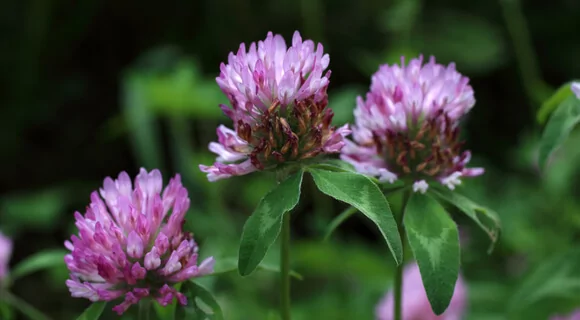
Best Cover Crop For Nitrogen Fixation
Clovers, vetches, and peas are nitrogen-fixing plants used by farmers worldwide, and in the US Southern Great Plains in particular.
Clover crop for nitrogen-fixing is used in spring or fall. Apart from the aforementioned practical advantages, blooming clovers are a spectacular view. Besides, new resilient white clovers by Texas A&M University resist rusts and droughts. Clovers may survive mild winters but are risky for severe ones.
Vetches are winter-hardy and thus are suitable for cooler seasons. Hairy vetch is the strongest type that is a good nitrogen-fixing winter cover crop. It is planted in early fall for the roots to establish before the first frosts.
Bean growing might serve two purposes: covering the soil with summer nitrogen-fixing crops or harvesting for food. Both ways, they enrich the soil with plant-suitable N. Southern peas prefer warm seasons and are sown when the soil temperature reaches 60F.
The list of nitrogen-fixing plants for agriculture is quite versatile and includes, among others:
- Beans: fava (aka faba, broad), alfalfa, green (aka French), runner, field, sweet, peanuts (aka groundnuts), soybeans, cream, black-eyed, or purple-hulled beans, lupins, lentils, cowpeas, chickpeas.
- Vetches: hairy, American, wood, tufted.
- Clovers: white, red, crimson, Silver River.
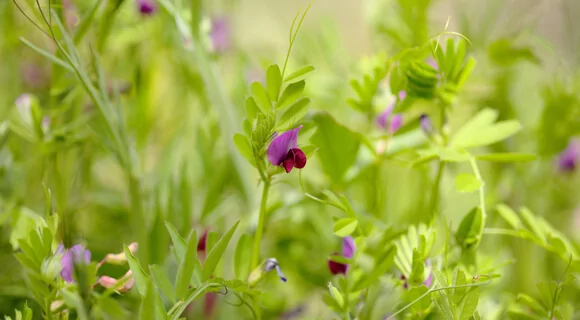
Value And Amounts Of Nitrogen Fixation In Leguminous Crops
The value of nitrogen-fixing crops is understood through the correlation of N fixed by legumes and costs of chemical fertilizers. It becomes even more obvious with the World Bank estimations of fertilizer prices to grow in 2021 . So, the question arises, how much N nitrogen-fixing plants can actually fix. In its turn, their capacity will help define the most productive crops for nitrogen fixation.
The quantity of nitrogen fixation in plants is different. It depends on multiple factors :
- Plant age. Older plants (perennial vs. nitrogen-fixing annual cover crops) are more efficient.
- Season duration. The longer the time, the higher nitrogen fixation rates are.
- Purpose. Harvesting, grazing, incorporation as green manure – cutting or grazing reduces nitrogen fixation properties while grain legumes are more productive.
- Overall growth conditions. Competition with other crops, unfavorable weather conditions, poor soils, improper weed management and pest control, etc. decrease the N-fixing potential in plants.
- Residual N in soils. It depends on the current N quantity in the soil from the previous crops or fertilization.
- Plant species. In terms of nitrogen-fixing capacity, growing alfalfa yields the best results, as well as clover.
The table below shows the nitrogen-fixing potential of some legumes, from highest to lowest.
| Legume species | Amount of nitrogen fixed, kg N ha−1 year−1 |
|---|---|
| Alfalfa | 465 |
| Red clover | 252 |
| Pigeon pea | 225 |
| Mung bean | 200 |
| Fava bean | 165 |
| Field pea | 111 |
| White clover | 102 |
| Peanut | 100 |
| Lentil | 52 |
| Common bean | 50 |
What Are Nitrogen-Fixing Bacteria?
As the name suggests, nitrogen-fixing bacteria participate in the process of this nutrient fixation. Nitrogen-fixing bacteria examples comprise Rhizobium (formerly Agrobacterium), Frankia, Azospirillum, Azoarcus, Herbaspirillum, Cyanobacteria, Rhodobacter, Klebsiella, etc. N-fixing bacteria synthesize the unique nitrogenase enzyme responsible for N fixation.
What Do Nitrogen Fixing Bacteria Do?
Nitrogen-fixing bacteria convert gaseous N from the air to inorganic compounds. Even though the role of legumes in N fixation is undeniable, the task is too hard for them alone. In fact, the fixation process occurs thanks to the symbiosis of legumes and nitrogen-fixing bacteria. It is common for Rhizobium, colonizing legume roots. However, their symbiosis is not the only option: there exist free-living and associated N fixation organisms as well.

Why Are Nitrogen Fixing Bacteria Important To Plants?
The role of nitrogen-fixing bacteria is to supply plants with the vital nutrient that they cannot obtain from the air themselves. Nitrogen-fixing microorganisms do what crops can’t – get assimilative N for them. Bacteria take it from the air as a gas and release it to the soil, primarily as ammonia. It is the only suitable option for plants because they can consume N only from the soil and only as nitrogenous inorganic compounds, which explains the importance of nitrogen fixation.
How Do Nitrogen Fixing Bacteria Help Crops Grow?
N-fixing bacteria provide crops with ready-to-use N that they need as part of chlorophyll molecules. Chlorophyll is critical for photosynthesis – transforming the energy of sunlight into chemical energy. Simply put, plants need it to get food. Also, they require N as part of amino acids to build proteins that participate in metabolism and energy storage. A lack of N fixation leads to food deficiency, which results in vegetation yellowing, thinning, withering, overall growth delay, and decay.
Access high-resolution satellite images to ensure effective fields management!EOSDA Crop Monitoring
How Do Nitrogen Fixing Bacteria Affect Soil Fertility?
Nitrogen-fixing bacteria in the soil saturate it with inorganic N-containing compounds, which are necessary crop nutrients. When fixation bacteria die, the accumulated N in their biomass is released into the soil. This way, they boost soil fertility naturally, allowing farmers to save on synthetic fertilizers.
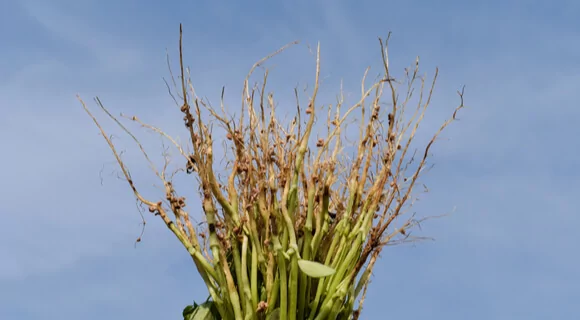
How Do Nitrogen Fixing Bacteria Help Cycle Nitrogen Through Ecosystems?
N-fixing bacteria participate in N-circulation through the ecosystems by catching it from the air and adjusting for plant needs (fixation of nitrogen). Then, crops use it for growth (N-assimilation). Further on, when plants and bacteria die, decomposers split their nitrogenous compounds and release ammonia or ammonium (ammonification). Nitrifying bacteria convert ammonia into nitrates (nitrification), either consumed by plants or denitrifying bacteria. The latter turn nitrates into free atmospheric nitrogen that comes back into the air (denitrification).
Even though N is important for plants, its excess fixation is harmful. For this reason, crop rotation of N-fixers and non-fixers is necessary for the optimal balance.
N-Fixing Bacteria By Type Of Interaction With Plants
There distinguished several types of N-fixing bacteria, depending on how they coexist with crops (basically, if they dwell on/inside the plant or not – endophytes vs. exophytes). Thus, there are symbiotic nitrogen-fixing bacteria, associative, and free-living ones. However, it does not mean that the same type is either symbiotic or free-living. Therefore, rhizobacteria can reside either on/inside plants or in the rhizosphere. The table below features nitrogen-fixing bacteria types and their main characteristics.
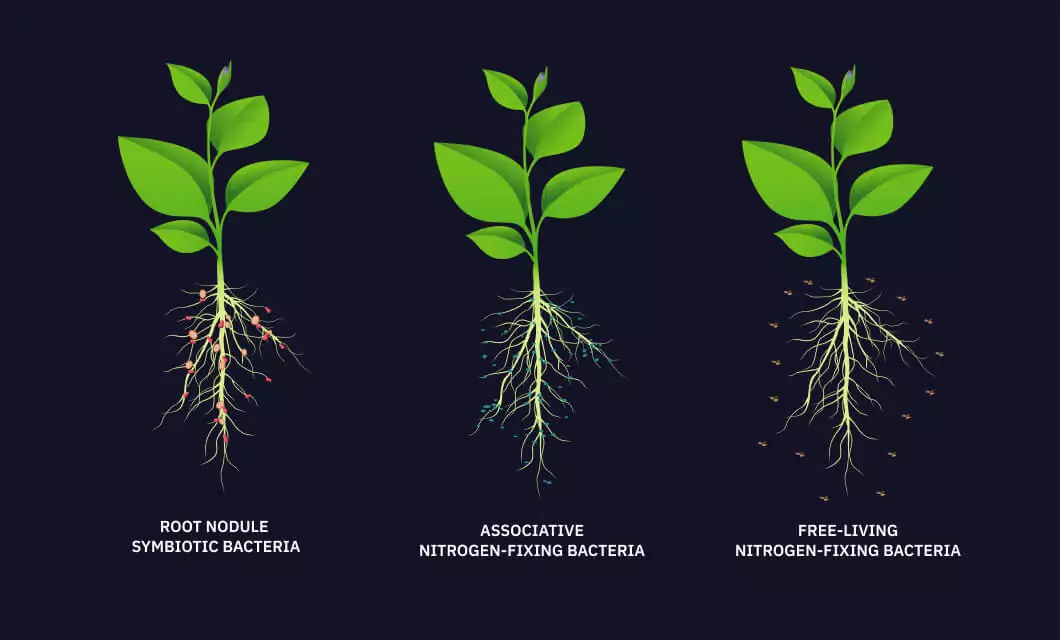
| Characteristic | Root nodule symbiosis bacteria | Associative nitrogen-fixing bacteria | Free-living nitrogen-fixing bacteria |
|---|---|---|---|
| Energy sourc | high | moderate | moderate |
| Oxygen protection | high | moderate | low |
| Transfer of fixed N | high | moderate | low |
| Estimates of nitrogen fixation rates, kg N ha−1 year−1 | 50–465 | 2–170 | 1–80 |
Symbiotic Nitrogen Fixation
Symbiotic N-fixing bacteria habituate on the host’s roots, forming nodules, accumulating atmospheric N2 in them, and turning it into ammonia. The host uses it for growth and releases it into the soil from the broken nodules after it dies. N fixation symbionts don’t do the ‘favor’ for nothing, though. Since any symbiosis suggests a win-win situation, the bacteria feed with plant-produced carbohydrates (sugars) and take carbon.
So, even though technically, their N fixation symbiosis is defined as infection, both of the parties benefit from it pretty well. For this reason, such a relationship is also called mutualism.
Common symbiotic N-fixing bacteria are Rhizobium and Frankia.
Nitrogen Fixing Bacteria Rhizobium
The relationship between legumes and nitrogen-fixing bacteria Rhizobium is a typical case of N fixation. Furthermore, it is not the sole advantage. This genus of nitrogen-fixing bacteria in legumes improves access to other nutrients and boosts the crop’s resistance to pathogens, pests, and abiotic stresses. This mutually beneficial interaction is favorable to farmers too, illustrated with the convincing estimated N fixation rates of 50–465 kg N ha−1 yr−1.
Normally, N-fixing Rhizobium exists in symbiosis. However, free-living ones might occur if they can’t find a suitable host. Even in isolation, they still can participate in N fixation by synthesizing nitrogenase and growing solely on N2 from the air.
Symbiotic Nitrogen-Fixing Bacteria Frankia
Like Rhizobium, Frankia fixes atmospheric N by root nodulation. Its certain strains can live freely as well. The two N fixation bacteria species differ by hosts. Frankia colonizes actinorhizal plants like alder, bayberry, sweetfern, Avens, etc., enabling them to survive even in infertile soils.
The N fixation symbiosis results in higher plant performance and improved soil conditions. This N-fixing genus is widely used in agroforestry.
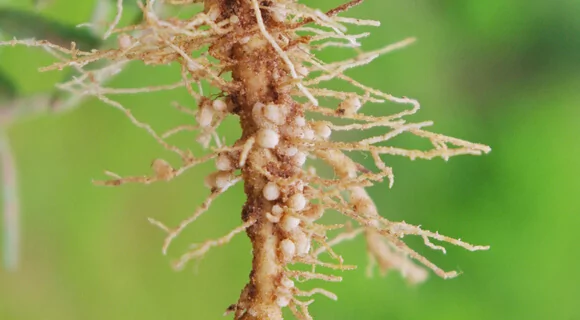
Associative Nitrogen Fixation
Associative symbiosis is typical for cereals and free-living N-fixing bacteria that may adhere to the host roots. This refers to such genera as Azospirillum, Glucenobacter, Acetobacter, Herbaspirillum, Azoarcus. They are closely associated with wheat, rice, corn, sugarcane, barley, sorghum, Setaria, biofuel crops like Pennisetum, and more.
Grains don’t fix N in nodules like legumes but rely on the nutrient availability in the soil, i.e. its fixation. In their turn, bacteria utilize the atmospheric N for their needs and ‘share’ it with the host crop.
Most N fixation bacteria reside on roots, but some aggressive types like Herbaspirillum may penetrate the entire plant . These microorganisms may enhance crop growth and boost yields, which is particularly important in poor soils.
Free-Living Nitrogen Fixation
Free-living N-fixing bacteria are also a source of N for crops. For example, rice producers add aquatic Azolla ferns to their fields as green manure, and Azolla serves as a habitat for Anabaena Azolla (cyanobacteria type), famous for N-fixing properties.
Cyanobacteria can live either symbiotically or freely and exist in moist soils and inland aquatic bodies. This type merges unique properties: it is classified as bacteria, though it resembles algae. In fact, it contains chlorophyll, meaning cyanobacteria are phototrophs (like plants). But unlike plants, they can fix N2.
EOSDA Crop Monitoring To Track Low N Content In Crops
All vegetation indices in EOSDA Crop Monitoring are directly or indirectly connected with chlorophyll content in crops. N immediately affects the amount and quality of the chlorophyll content so farmers can track it.
Apart from the aforementioned chlorophyll’s importance for the process of photosynthesis, its recognizable feature is providing green color to plants, which allows for assessing the crop state. Vibrant deep green is typical for healthy plants that contain chlorophyll in abundance. On the contrary, yellowing (chlorosis) and pale green signal chlorophyll deficiency and plant health deviations, possibly due to a lack of nitrogen fixation. Besides, the pigment content in young crops is higher than in mature ones.
ReCI is sensitive to chlorophyll content that directly corresponds to N fixation. Insufficient N fixation quantities result in slow crop development, small pale-green leaves, weak branching, premature yellowing, thin stems, etc.

Heavy rainfalls may also provoke N drops that a farmer can track on EOSDA Crop Monitoring alongside the ReCI index chart. Also, the platform provides weather forecasts for up to 14 days, which allows scheduling field activities and predicting the crop state. ReCI is efficient at the state of active plant development and is not used at the harvesting time. To get a more precise picture of crops in a field, combine the ReCI index with other vegetative indices available on EOSDA Crop Monitoring – NDVI, MSAVI, and NDRE.
That’s why it’s important to test a field for N-content and keep the optimal balance by its fixation, considering the current level in soil and all the fertigation methods planned. The optimal level of N is specific for each crop, so its lacking amount will also differ.
Benefits Of Biological Nitrogen Fixation
Intensive agriculture heavily exploits synthetic fertilization for N fixation, harmful to the environment. Contrary, Biological N fixation proves to be friendly both to farmers and nature. It is efficiently implemented through N-fixing crop species and certain microbial balance, contributing to organic farming. Thus, low maintenance nitrogen-fixing cover crop is a significant source of N itself, not to mention the other above-listed advantages.
As for non-legumes, N-fixing bacteria inoculants are an efficient solution. They allow farmers to get the job done without artificial means. Furthermore, microorganisms’ efficiency goes far beyond N fixation since they improve soil conditions, tackling heavy metals in particular.
Symbiotic nitrogen fixation bacteria are reported to be more efficient than free-living ones since they release the nutrient to the host plant directly, sparing it the competition with other N-consumers. In this regard, N fixation intracellular microorganisms (e.g., Herbaspirillum or Azoarcus) are the strongest.
Keeping the optimal N fixation balance with proper monitoring is the key to success. EOSDA Crop Monitoring is a farmers’ reliable online partner, ready to track the situation 24/7.
About the author:
Vasyl Cherlinka is a Doctor of Biosciences specializing in pedology (soil science), with 30 years of experience in the field. He attended the engineering college in Ukraine and received his degree in agrochemistry, agronomy and soil science in the Chernivtsi National University. Since 2018, Dr. Cherlinka has been advising EOSDA on problems in soil science, agronomy, and agrochemistry.
Recent articles

Transition Guide From Sentinel Hub EO Browser To EOSDA LandViewer
Need an EO Browser alternative that’s just as familiar but more flexible? EOSDA LandViewer offers free recent imagery, a vast satellite data archive, and advanced analytical tools.

EOSDA & Agribest: Driving Agtech Growth In Mexico
In this insightful interview, Agribest shares how its collaboration with EOSDA is shaping Mexico’s agricultural future, with a focus on profitability, sustainability, and technology.

Top Ready-Made Agriculture Tools & Softwares for 2025
Agriculture softwares are silent partners in the field, working tirelessly behind the scenes to support farmers with insights and precision to cultivate sustainable agricultural ecosystems.